
Why Tracking Bounce Rate Is Crucial for Website Success
Keep track of your website’s bounce rate and overall performance while using the right tools and software to keep the bounce rate in check. Using the right tools and strategies will also help you increase the efficiency and performance of your website. Follow this blog to learn how.
The bounce rate is a pivotal metric in website analytics that serves as a crystal-clear mirror reflecting user engagement, pageview, and site effectiveness. It measures the percentage of visitors who land on your website and decide to leave without browsing further — a single-page session. This performance indicator is often overlooked, yet it holds immense significance as it directly influences your online presence, search engine ranking, and user retention.
An elevated bounce rate can be a loud siren signaling that your website may not resonate with your audience. It could be due to multiple factors such as page load times, content relevance, user experience, or simply not meeting the user’s expectations.
Monitoring and managing your bounce rate effectively is essential for enhancing user experience and boosting your site’s ROI and conversion rates. In this article, let’s delve into the art and science of bounce rate to bolster your website performance.
Bounce rate is a marketing term or metric used to analyze web traffic. It measures the percentage of visitors who land on a website but then leave it (i.e., bounce) without viewing any other pages or clicking any links within the site. In other words, a bounce happens when there is only a single-page visit, with no engagement beyond that one web page. Therefore, a bounce rate reflects the average number of single-page visits compared to the total amount of visits to the entire website.
–kollaborationdallas.org
The Importance of Measuring Bounce Rate
Understanding the definition and meaning of bounce rates is critical for any website owner or digital marketer. It’s a metric that reveals much more than a simple percentage—it uncovers the story of how users interact with your site. Measuring bounce rate is essential for several reasons:
Indicator of User Engagement and Content Quality
High bounce rates could indicate that your site’s landing pages are irrelevant or engaging enough to motivate visitors to stay longer and explore other pages. These metrics provide valuable insights into the effectiveness of your content and whether it meets your audience’s expectations. When users find what they are looking for and are engaged with the content, they will likely remain on your website, reflected in a lower bounce rate.
Role in Analyzing the Effectiveness of Digital Marketing Strategies
Digital marketing strategies are only as strong as the data that informs them. Bounce rate is a filter to assess whether your strategies bring in the right traffic. A high bounce rate might suggest that your targeting is off or that your marketing messages are inconsistent with your website’s content.
Alternatively, it is a clear signal to re-evaluate the user’s journey and refine your approach to align with your visitors’ intent. Tightly aligning your strategies with what users expect will lead to better engagement and, ultimately, the success of your online business.
- User engagement:
- Content quality:
- Digital marketing effectiveness:
A low bounce rate often corresponds to higher engagement, meaning users take the desired actions on your site.
The bounce rate can indicate content relevance and value, prompting adjustments for improvement.
Assess whether your promotional efforts target and attract the right audience.
Pro Tip- Regularly analyze your bounce rate alongside other engagement metrics to comprehensively understand user behavior and tailor your content and marketing strategies accordingly.
Setting Up Google Analytics to Track Bounce Rate
Understanding your bounce rate is crucial, but first, you must set up Google Analytics to track this vital metric. Follow this comprehensive, step-by-step process to create your account and implement the tracking code on your website.
Step-by-Step Process to Create a Username and Set Up an Account
- Visit the Google Analytics website and click the ‘Sign Up’ button.
- Fill in your account information, such as account name, website name, website URL, and industry category.
- Accept the terms of service when creating your new Google Analytics account.
- Upon account creation, you will be provided with a unique tracking ID.
Configuration of Google Analytics Tracking Code on Your Webpage
With your Google Analytics account ready and tracking ID in hand, it’s time to configure your website to track user interactions, including bounce rate.
- Log into your Google Analytics account using your email address and other necessary credentials, and select the website you wish to track.
- Navigate to the ‘Admin’ section at the bottom left corner of your Google Analytics dashboard.
- In the ‘Property’ column, click ‘Tracking Info’ and then ‘Tracking Code.’
- Your website’s unique Global Site Tag (gtag.js) will be displayed. It is the tracking code you need.
- Copy the entire snippet of the Global Site Tag.
- Paste this code in the section of every webpage you want to track, ideally right after the opening tag.

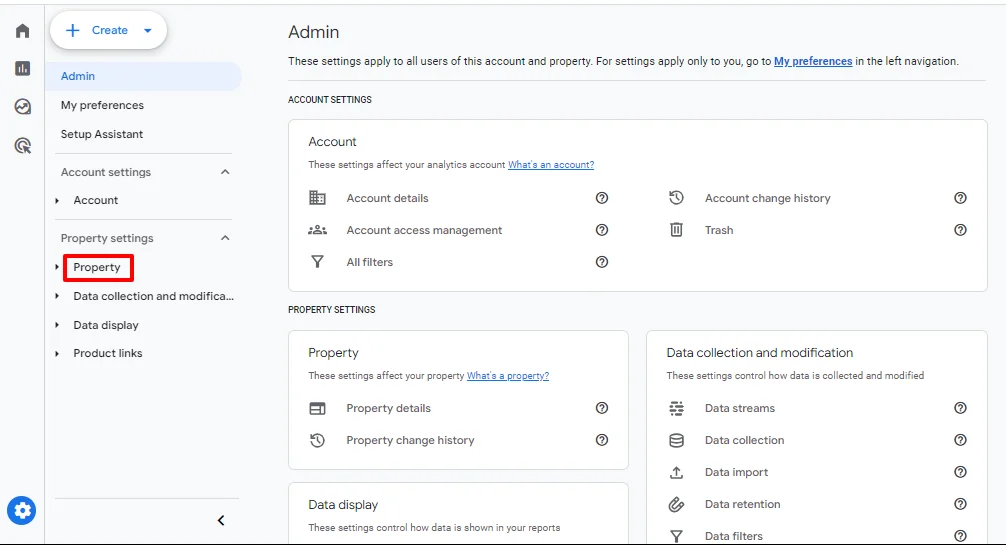
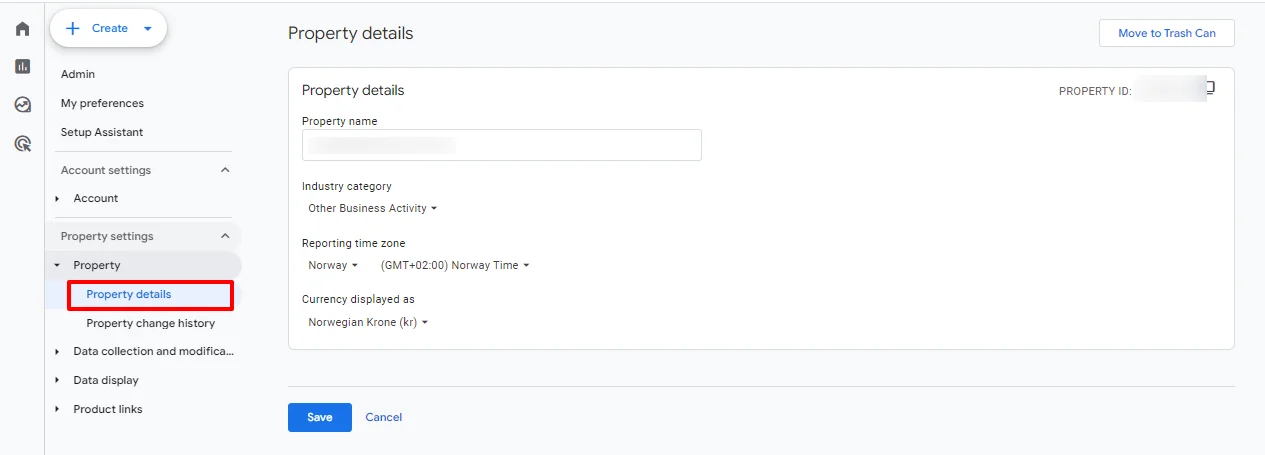
Ensure the code is placed correctly and verify the tracking status in Google Analytics to confirm that data is being received. Once the above steps are completed, Google Analytics will actively track visits and interactions, including bounce rates, on your website. Give it time to gather data, and then you can analyze your bounce rate through the various reports available.
Pro Tip- Regularly check the implementation of your Google Analytics tracking code to ensure accurate data collection, and periodically review your analytics settings to stay informed about changes and updates that may affect your tracking.
Navigating Google Analytics Reports to Find Bounce Rate
Understanding how to navigate Google Analytics reports efficiently is essential for monitoring your website’s bounce rate. With many reports at your fingertips, knowing which ones to utilize can be pivotal in obtaining a comprehensive view of user engagement.
Different Types of Reports Available
- Audience Reports:
- Acquisition Reports:
- Behavior Reports:
- Conversion Reports:
Get a holistic view of your visitors’ demographics and behavior.
Analyze the channels that drive traffic to your site.
Dive into how users interact with your site’s content.
Understand how well your site is achieving its goals.
Locating Bounce Rate Data
Here’s how you can locate bounce rate data for both specific pages and site-wide metrics:
Drilling these reports can reveal patterns and help you pinpoint where your site may lose visitors’ interest. With this data, you can craft targeted strategies to improve your site’s bounce rate and overall engagement.
Bounce rates can be used to help determine the effectiveness or performance of an entry page at generating the interest of visitors. An entry page with a low bounce rate means that the page effectively causes visitors to view more pages and continue deeper into the website. High bounce rates typically indicate that the website is not doing a good job of attracting the continued interest of visitors. That means visitors only view single pages without looking at others or taking some form of action within the site before a specified period.
–wikipedia.org
Factors Contributing to a High Bounce Rate
Understanding the elements that lead to an elevated bounce rate can help you identify the aspects of your website that may require immediate attention. Below, we break down some critical factors that often contribute to a high bounce rate, providing insight into what may be prematurely driving your users away.
Technical Website Issues
Technical issues on a website can frustrate users and prompt them to leave without interacting further. Several common problems include:
- Slow Load Times:
- Mobile Unfriendliness:
- Error Pages:
- Broken Links:
- Complicated Navigation:
A website that takes too long to load can test a user’s patience, making them more likely to leave.
A site not optimized for mobile use can create a cumbersome experience for users on smartphones and tablets.
Encountering 404 or other error messages can disrupt the user experience and increase bounce rates.
Clicking on a link that doesn’t work can be a source of frustration, leading to an immediate site exit.
A confusing website layout makes it difficult for users to find what they need, often causing them to give up and leave.
Content Quality and Relevance
Content is critical in engaging your audience and encouraging them to explore your website. Consider the following content-related factors:
- Irrelevant Content:
- Poor Quality Content:
- Lack of Clear CTA:
If the content on the landing page doesn’t match what users are looking for, they are more likely to bounce back to the search results.
Poorly researched, written, or presented content can damage credibility and discourage users from engaging further.
A missing or unclear Call to Action can lead to confusion about the next steps, potentially increasing the bounce rate.
Addressing these factors can help lower your website’s bounce rate and enhance the overall user experience, leading to better engagement and conversions.
Pro Tip- Conduct website audits regularly to identify and address technical issues, such as slow load times, mobile unfriendliness, and broken links. Additionally, consistently review and optimize your content to ensure relevance, quality, and clear calls to action, reducing bounce rates and improving user experience.
Utilizing Marketing Analytics Tools to Monitor Bounce Rate
An in-depth understanding of your site’s bounce rate can significantly affect user engagement and conversion rates. While Google Analytics is a widely used platform for monitoring bounce rates, various other tools in the market offer powerful features that give you deeper insights. Exploring these tools ensures you have all the necessary data to make informed decisions.
Diverse Tools for Bounce Rate Analysis
Each marketing analytics tool has unique strengths in assessing bounce rate and user behavior. Here’s an overview of other valuable tools that can complement or serve as alternatives to Google Analytics:
- DiGGrowth:
- Crazy Egg:
- Kissmetrics:
- Clicky:
- Woopra:
DiGGrowth helps CMOs, performance marketers, and marketing teams harness the power of data to make confident decisions without hesitation.
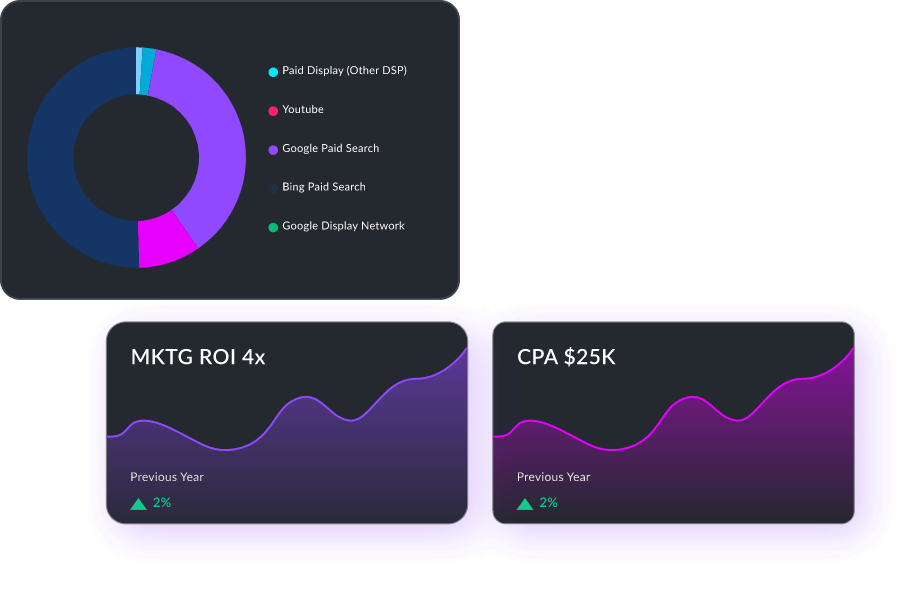
Offers heatmaps and scroll maps that show where users are clicking and how far they’re scrolling, shedding light on engagement levels.
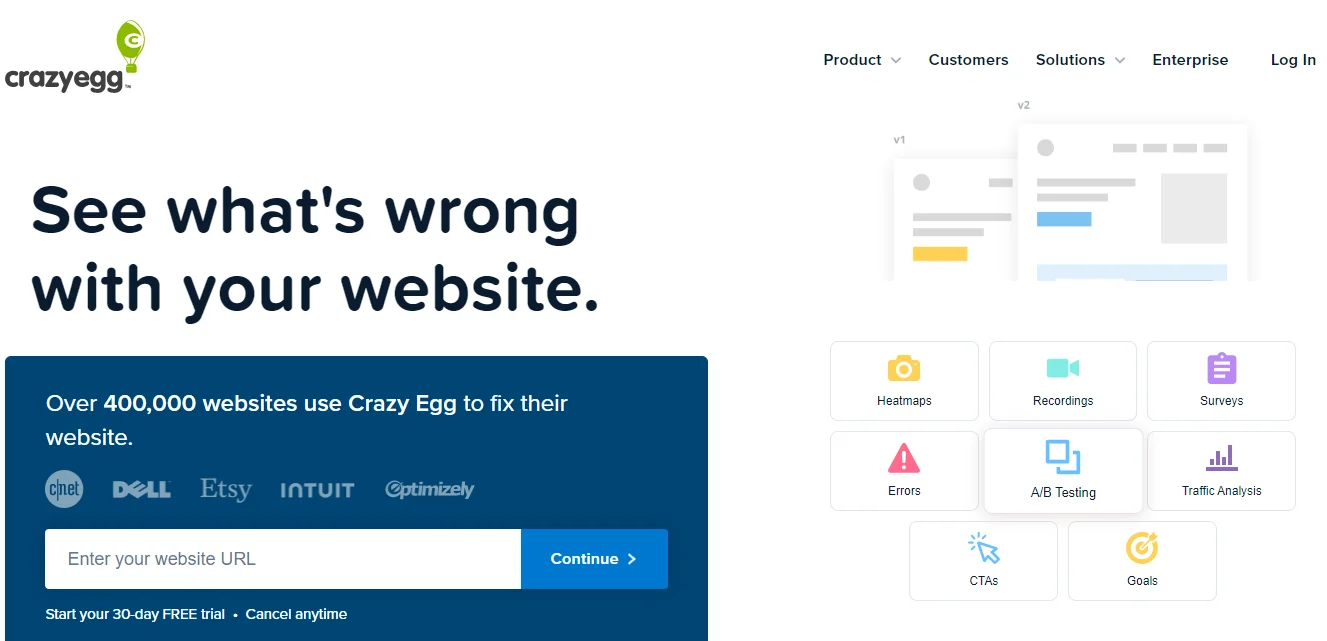
Provides user-centric insights that help trace individuals’ journeys on the site, helping to identify points of exit and engagement.
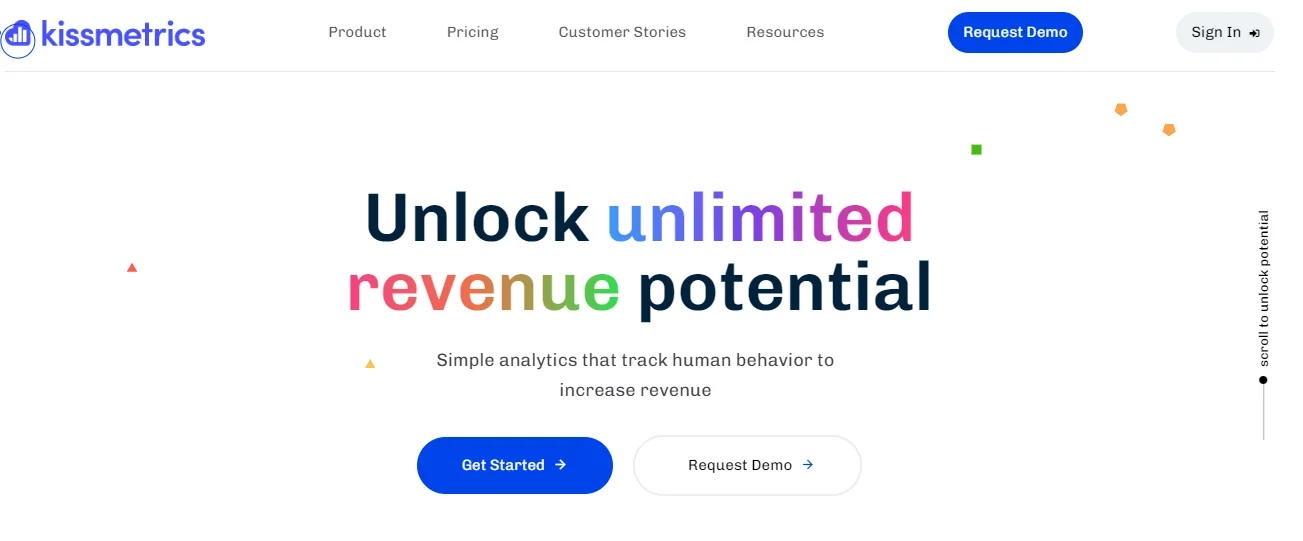
Delivers real-time analytics, allowing for the immediate observation of changes in bounce rate and user actions.
Focuses on tracking the customer’s lifecycle and creates detailed reports on user retention and engagement.
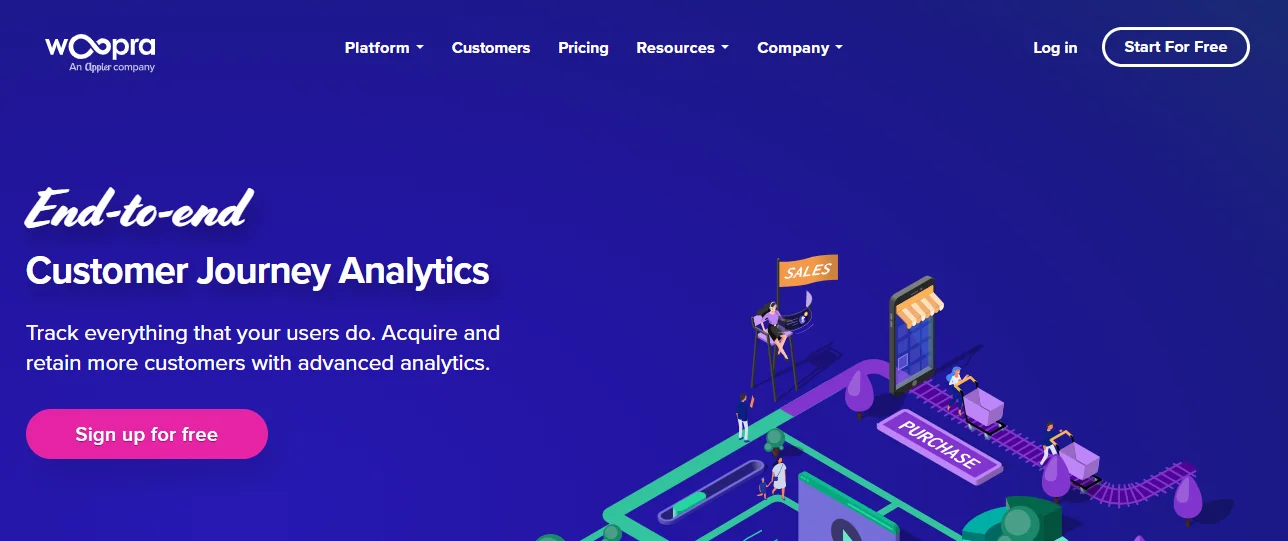
Advanced Features to Explore
When evaluating the efficiency of marketing tools for bounce rate analysis, consider the following robust features that can give you a competitive edge:
- User Session Recording:
- Custom Event Tracking:
- Funnel Analysis:
- Segmentation Capabilities:
By observing real-time interactions on your site, you can pinpoint usability issues that may contribute to a high bounce rate.
Tailoring your analytics to monitor actions can link bounce rate fluctuations with particular events or campaigns.
Understanding at which stage users leave can help address content or flow issues within your website.
Breaking down the data by device, source, geography, or behavior can reveal patterns contributing to bounce rate variations.
By integrating these advanced tools into your analytics strategy, you can gain a granular understanding of bounce rate dynamics. It can help you make data-driven decisions that significantly improve user engagement and reduce bounce rate, ultimately impacting your bottom line.
Pro Tip- Enhance your bounce rate analysis by integrating Google Analytics with tools like DiGGrowth, Crazy Egg, Kissmetrics, Clicky, and Woopra. Use advanced features like session recording, event tracking, funnel analysis, and segmentation for deeper insights and effective user engagement optimization.
Actionable Steps to Lower Bounce Rate
An effective strategy to lower your website’s bounce rate is a multi-faceted endeavor that requires ongoing attention to site design, content quality, and user engagement. Below, we summarize the key techniques covered in this post and emphasize the importance of an iterative process of monitoring, analyzing, and refining your site for optimal performance.
Quick Tips to Reduce Bounce Rate
- Improve Page Load Time
- Engaging Content
- Appealing Design
- Clear CTAs
- Responsive Design
- Internal Linking
- High-Quality Images
- A/B Testing
Iterative Optimization Process
Reducing the bounce rate is not a one-off task but an iterative process. Regularly check your analytics to track changes in bounce rate and user behavior. Use this data to refine and optimize the following continually:
- User Experience:
- Content Relevance:
- Page Speed:
Make the browsing experience intuitive and enjoyable for your users.
Ensure content matches user intent and answers their questions.
Continuously improve load times for a seamless user experience.
By consistently applying these techniques and paying close attention to the results, you can systematically reduce your bounce rate and improve your site’s performance. Remember, it’s about providing the best possible experience for your users, which benefits your site’s standing with your audience and search engines.
Key Takeaways
- The bounce rate is a crucial metric reflecting user engagement, content relevance, and site effectiveness. Monitoring and managing it effectively can enhance user experience and boost site ROI and conversion rates.
- Setting up Google Analytics to track bounce rates is essential. Follow a step-by-step process to create an account and implement the tracking code on your website. It enables you to gather data and analyze bounce rates efficiently through various reports.
- Addressing technical website issues, improving content quality and relevance, leveraging A/B testing, optimizing CTAs, and enhancing site design and UX are key strategies to lower bounce rates and improve overall website performance.
- Lowering the bounce rate is an iterative process that requires ongoing attention and optimization. Regularly track analytics, refine strategies based on data insights, and stay current with user engagement and conversion optimization trends for sustained success.
Conclusion
Tracking and reducing the bounce rate is an essential aspect of website optimization. We’ve covered strategies, from setting up Google Analytics for tracking to understanding and analyzing bounce rate metrics. Whether enhancing website design, optimizing CTAs, or implementing SEO best practices, each technique is crucial for keeping your visitors engaged and converting.
These strategies require ongoing effort and a keen eye on your analytics. As your website evolves, so should your approach to managing bounce rates. Continuous learning and adaptation are key, informed by meticulous data analysis and proactive change implementation. Revisit these methods regularly, refine your strategies, and stay current with user engagement and conversion optimization trends.
Are you struggling with high bounce rates on your website? Get DiGGrowth’s analytical excellence onboard today and increase your website’s reach, visits, and engagement by leaps and bounds.
Write to us at info@diggrowth.com and contact our team today for further assistance.
Citations
https://en.wikipedia.org/wiki/Bounce_rate
http://kollaborationdallas.org/bounce-rate.html
Ready to get started?
Increase your marketing ROI by 30% with custom dashboards & reports that present a clear picture of marketing effectiveness
Start Free Trial
Experience Premium Marketing Analytics At Budget-Friendly Pricing.

Learn how you can accurately measure return on marketing investment.
Additional Resources
How Predictive AI Will Transform Paid Media Strategy in 2026
Paid media isn’t a channel game anymore, it’s...
Read full post postDon’t Let AI Break Your Brand: What Every CMO Should Know
AI isn’t just another marketing tool. It’s changing...
Read full post postFrom Demos to Deployment: Why MCP Is the Foundation of Agentic AI
A quiet revolution is unfolding in AI. And...
Read full post postFAQ's
In analytics, bounce rate refers to the percentage of visitors who leave a website after viewing only one page without engaging further.
The bounce rate is calculated by dividing the total number of single-page sessions by the total number of sessions on the website and multiplying by 100.
To reduce bounce rate, improve user experience, provide relevant content, optimize page load times, enhance website design, and ensure clear calls-to-action (CTAs).
Factors such as slow load times, irrelevant content, poor website design, confusing navigation, and lack of clear CTAs can increase the bounce rate.
The two bounce rates are "overall bounce rate," which measures the percentage of single-page sessions across all website pages, and "page-specific bounce rate," which measures the bounce rate for individual page pages.


